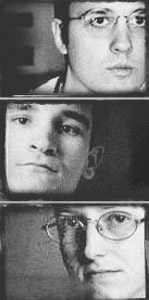



When it comes to films on suicide, Wikipedia misses some pretty important classics. However, without the guidance of the wiki, I never would have found this absolutely fantastic Australian film. After getting it from the library in region 2/4 coding, and figuring out how to watch it, I have already seen the movie twice and loved it just as much on the second go around. The movie is really hard to find, and very expensive, but somebody has kindly posted it on YouTube. So long as it stays around, I would encourage everyone to check it out (it's in 10 parts, but totally worth it.) Hopefully the movie will become more readily available in USA format in the future!
2:37 chronicles a day in the life of several high schoolers. Writer and director Murali K. Thalluri was not afraid to take on even the most sensitive issues, but portrays them tastefully and artistically. It follows a whodunit storyline, as you know that somebody is dead at the opening of the film, but it is not revealed who or how. Careful observation makes it not too hard to figure out, but I will not spoil that part in hopes that people will actually watch the movie (and discuss their thoughts with me later!). The movie was shot from multiple perspectives, portraying how absolutely consuming the problems are to those who endure them, but how insignificant they appear to passersby caught up in their own drama and struggles. Intermittently throughout the movie, there are documentary-style, black and white shots of the characters revealing more about themselves; these were beautifully done and really help you to understand the teens even further as people who, ironically, are not black and white.
I will warn you that the ending is really graphic. Thalluri shows suicide in a way that is meant to be a deterrent; there is a lot of ambivalence, pain, regret, and blood. It is heart wrenching, and it made me sick to my stomach, but it would have been a disservice to show the death quickly as though the decision was easy and the process painless.
The director says he wrote the script in about a 30 hour period after waking up from a failed suicide attempt, and that the project was very emotionally cathartic for him. (Note also that he was about 20 years old when he wrote it, pretty impressive.) It was all paid for by independent investors. Actors were picked through acting classes and right off the street, rather than auditions, and then went through a lot of workshopping before doing the actual filming. The actors are young, and often were inexperienced, but I think they did a terrific job of portraying such intense people.
Along the way, there were plenty of snafus and times that production was almost shut down, but I am very thankful that it made it all the way to completion. Sure, the movie focuses on problems that may go beyond the scope of many of your average teens, and it may receive criticism for being overly dramatic, gory, or for one line in which a classmate says that the person who killed themselves is lucky (but really, in a high school, when isn't there somebody emotionally troubled who does not think that; after all, where do copycat suicides come from?). However, I think it is important to take away that these problems are not as rare as we would like to believe, that they often occur for those whom you least suspect, and that they are all too often bottled up below the surface, leaving those who experience them to deal with their emotions painfully alone--often to catastrophic, tragic results.
Below is a trailer for the film, and I hope that you will go check out the actual movie in its entirety!








